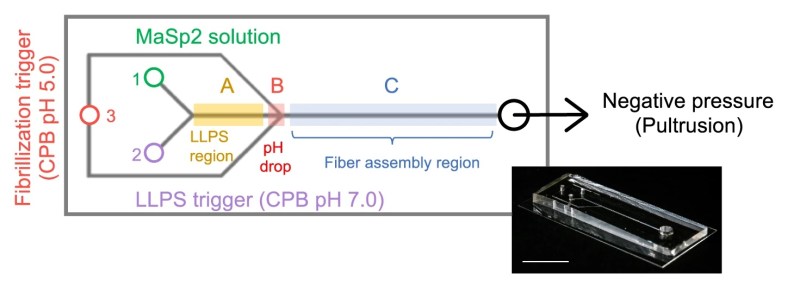While spider silk proteins are something you can make in your garage, making useful drag line fibers has proved a daunting challenge. Now, a team of scientists from Japan and Hong Kong are closer to replicating artificial spider silk using microfluidics.
Based on how spiders spin their silk, the researchers designed a microfluidic device to replicate the chemical and physical gradients present in the spider. By varying the amount of shear and chemical triggers, they tuned the nanostructure of the fiber to recreate the “hierarchical nanoscale substructure, which is the hallmark of native silk self-assembly.”
We have to admit, keeping a small bank of these clear, rectangular devices on our desk seems like a lot less work than keeping an army of spiders fed and entertained to produce spider silk Hackaday swag. We shouldn’t expect to see a desktop microfluidic spider silk machine this year, but we’re getting closer and closer. While you wait, why not learn from spiders how to make better 3D prints?
If you’re interesting in making your own spider silk proteins, checkout how [Justin Atkin] and [The Thought Emporium] have done it with yeast. Want to make your spider farm spiders have stronger silk? Try augmenting it with carbon.

















One step closer to the synthetic spider silk mentioned in Robert Heinlein’s short story “Misfit” from 1939.
https://en.wikipedia.org/wiki/Misfit_(short_story)
Very interesting article, also with regard to my Spiderman web shooter, which I am currently working on: https://www.youtube.com/watch?v=9Zq9lgUBvMw
Combine it with carbon nanotubes and we might get that space elevator after all.
https://hackaday.com/2018/03/15/carbon-augmented-spider-silk/
My money is on a space escalator.
That’s really cool. The last research I saw was genetically modifying silkworms to produce spider-strength silk. PBS SciShow just did an episode. But this further may might allow us to skip the arthropods entirely.
When ever people talk about synthetic silk, I think: If only there was a scalable self-reproducing machine for making spider’s silk. It could be mounted on a small tripod, actually an octopod might be more stable. And let’s make some of them poisonous so people don’t try to pet them. ;-)
But the problem is when you put two of those machines together they try to kill each other.